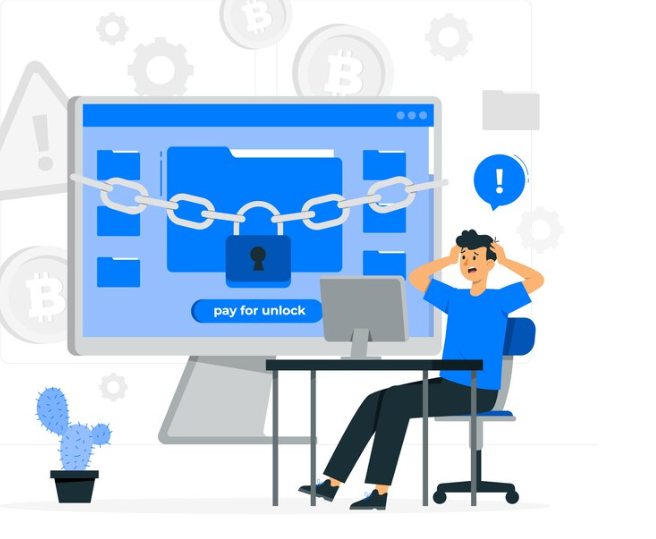The advent of digital technologies has revolutionized business practices. Companies today keep large amounts of data online, from consumer information to highly confidential financial records. With the proliferation of cloud computing and telecommuting, data security has become an urgent issue.
Virtual data security is the procedures and safeguards to protect your digital assets. It’s not only about keeping secrets safe any more than it’s about keeping your company solvent and out of legal trouble.

A Sneak Peek at the Future
We’ll learn more about the dangers posed by virtual data in the following sections. We’ll go over what “virtual data security” means, why it’s important, the different kinds of dangers to it, and some actual cases of data breaches that have occurred. After reading this article, you will have a firm grasp of the virtual data security landscape and the measures necessary to safeguard your company.
Understanding Virtual Data Security Threats
What Is Virtual Data Security, and Why Is It So Important?
Cybersecurity, which refers to protecting digital data against unauthorized access, data breaches, or damage, is another name for virtual data security. Information security is safeguarding data stored in digital form from attacks that could jeopardize its privacy, authenticity, or accessibility.
Protecting sensitive information in the cloud is crucial. Financial losses, declining client confidence, and severe legal repercussions are all possible results of a security breach. In today’s information economy, safeguarding your digital possessions is crucial.

Data Security Dangers Come in Many Forms
There are several types of threats to data security, each with its unique methods and risks. Let’s look at a few of the most typical examples:
-
Malware and Ransomware Attacks
Malicious software, or malware, is software designed to cause harm. These applications are harmful because they aim to compromise a system, steal information, or impede normal functioning. Ransomware is malicious software that encrypts a user’s files and
requests payment in exchange for decrypting them. Malware and ransomware can wreak havoc on your company if you aren’t adequately protected against them.
-
Phishing and Social Engineering
Emails or other messages purporting to come from a reputable organization are often used in phishing attempts. Users are tricked into providing personal information or visiting dangerous websites after opening these messages. Using psychological tricks, social engineers coerce targets into revealing sensitive information. Both methods are frequently used to break into computers without permission.
-
Insider Threats
The danger may not always originate from the outside world. Individuals working within a company and having access to sensitive information represent a concern known as “insider threat.” These people provide a complicated threat to corporations since they may inadvertently or purposefully breach security.
-
Zero-Day Vulnerabilities
Software or hardware may have security flaws known only to the attacker, known as zero-day vulnerabilities. Businesses that rely on vulnerable technology face a severe risk when cybercriminals take advantage of the flaws in question before a patch is released.
Real-World Examples of Data Breaches
When real-world data breaches are considered, the importance of virtual data security is made all too evident. In 2017, a data breach at Equifax, a primary credit reporting service, revealed the personal information of almost 147 million people and was one of the most prominent breaches. Because of the legal repercussions, financial losses, and loss of trust that this breach caused, several high-level executives had to resign.
There have been countless data breaches over the years, and these are just a few examples. They highlight the paramount importance of stringent safeguards for digital information.
In this post, we discussed the different types of online risks that modern organizations face. Your company must be safe from these dangers. In the following paragraphs, we’ll go into countermeasures to these dangers and share examples of how certain companies have dealt with the risks posed by virtual data. Keep reading as we explore the field of cyber security in further detail.
Protecting Your Business: Virtual Data Security Threats Explained
Data security is critical in today’s rapidly developing online business environment. Cybersecurity breaches can have severe repercussions for enterprises, including monetary losses, tarnished reputations, and problems with regulatory compliance. In this piece, we’ll delve into these threats and offer some solid defenses to help you keep your business safe.
The Impact of Data Security Threats on Businesses
Threats to the safety of your virtual data are not trivial nuisances; they can seriously harm your company. Let’s examine these dangers and their potential effects on your company.
Financial Consequences
Losses to your company’s bottom line might be substantial in the event of a data breach, cyberattack, or another security flaw.
The average cost of a data breach is in the millions, according to recent studies, making it a significant worry for companies of all kinds. Thus, investing in the safety of your company’s virtual data is not just a good idea; it’s crucial to your company’s long-term viability.
Reputational Damage
A data breach’s repercussions aren’t limited to a loss of money. Reputational harm can be long-lasting and even permanent for a business. If customers and clients lose faith in your capacity to keep their information secure, you risk losing your business and maybe facing legal repercussions.
An example is the 2013 data breach at Target, a prominent American store, which exposed the credit card details of millions of consumers. Consequences included a steep reduction in consumer confidence, a slump in share values, and protracted legal wrangling. Preventing irreparable harm to your company’s online reputation requires rigorous attention to virtual data protection.
Legal and Compliance Issues
Legal and regulatory issues are also affected by cyber security risks. The General Data Protection Regulation (GDPR) of the European Union and the Health Insurance Portability and Accountability Act (HIPAA) of the United States are just two examples of the many data protection laws that apply to businesses. Legal consequences, including monetary fines and the obligation to inform impacted parties, may follow a data breach.
Avoiding fines isn’t the only reason to make sure your company follows data protection rules; doing so is also the ethical thing to do. You may successfully negotiate the maze of legal and compliance requirements if you take adequate precautions to protect your data.

Common Vulnerabilities and Weak Points
Knowing where your data security architecture is most susceptible to attacks is the first step in improving it. Let’s look into some of these worries.
Incompatible and Outdated Programs
Cybercriminals frequently target outdated software and hardware. Similarly to the rapid development of new technologies, new security risks emerge. If you don’t patch security holes in your software and systems regularly, hackers will have an easier time finding and exploiting them. Invest in modern security tools and update them regularly to protect your company.
Poor Password Management
Passwords that are too simple to guess are a typical security flaw. Passwords like “123456” and “password” used by employees are a security risk. Passwords should be firm and unique, and multi-factor authentication (MFA) should be implemented for further protection.
Lack of Employee Training
The most common cause of data loss is human mistakes. Employees without proper training in data security best practices may unwittingly put your company at risk. Ensure your employees receive consistent education and training on security awareness, the value of data protection, and how to identify and respond to risks.
Inadequate Data Backups
Without sufficient backups, your company risks losing valuable information during a hack or system failure. Ensure your company can rapidly recover from unforeseen disasters by regularly backing up its critical data and testing the restoration process.
Protection Strategies
After discussing the severity of data security threats and the most prevalent holes in security, we will discuss the best defense methods for your company.
Implementing Strong Access Controls
Tighten up who can see private information by implementing tight access controls. Use role-based access to restrict employee access to only the information they need to do their jobs.
Regular Software Updates and Patch Management
Update your hardware and software regularly. Apply patches and updates often to close security holes that hackers could exploit.
Security Awareness Training for Employees
Invest in ongoing training to inform your staff of the latest security trends. Instruct them on how to deal with potential dangers safely.
Powerful Encryption for Data
Encrypt private information at rest as well as in motion. Using encryption makes it more challenging for hackers to access your data.
Backup and Disaster Recovery Plans
Create a strategy for backing up your data and recovering it in a disaster.
Employing Endpoint Security Solutions
Cybersecurity dangers can be mitigated with the help of endpoint security solutions like antivirus and intrusion detection systems. Listen in as we proceed with our exploration of virtual data encryption.
Protecting Your Business: Virtual Data Security Threats Explained
Keeping your company safe from hackers and other cybercriminals is a constant uphill battle in this day and age. Knowing how to identify and respond effectively is essential, in addition to comprehending the threats and weaknesses. In this article, we’ll delve into virtual data security and look ahead to the future of detection and response technologies, real-world case studies of firms that successfully secured themselves, and more.
Detecting and Responding to Virtual Data Security Threats
Businesses need to change to better monitor for and counteract evolving threats to the security of their digital data. Let’s go into the meat of this crucial stage.
.
The Role of Intrusion Detection Systems (IDS) and Intrusion Prevention Systems (IPS)
- When fighting to keep sensitive information safe in the cloud, intrusion prevention and detection systems are crucial weapons. To prevent unauthorized access, these systems are set up to constantly monitor network traffic for any signs of unusual or malicious activity.
- The primary function of an IDS is to detect security flaws. It constantly monitors network activity and evaluates it against a set of rules. It sounds an alarm if it notices something out of the ordinary that could be dangerous.
Incident Response Planning
Having a well-defined incident response plan is as essential as using detection systems.
The process of selecting a special team to deal with an incident.
Team members know their specific tasks.
Developing methods of interaction.
The situation must be contained right now.
Analysis and research to learn more about the incident.
Making plans for fixing a problem.
Observance of rules and laws.
Stakeholder engagement entails talking to people like employees, customers, and government officials.
Organizations may lessen the blow of security breaches and get back on their feet more quickly if they have an incident response plan.

Post-Incident Analysis and Learning
- Containing and recovering from a data security disaster is only the beginning. Analysis of an incident’s aftermath is vital for figuring out what went wrong, why it happened, and how to avoid it from happening again.
- A comprehensive post-incident analysis is what all organizations should do.
- She was locating the underlying problems that led to the occurrence.
- Evaluation of the reaction’s efficacy.
- We are creating new and better security practices.
- We are making adjustments to improve the company’s security measures.
- Your company can better withstand the ever-evolving dangers to its virtual data security if its employees and leaders learn from each occurrence.
Case Studies: How Businesses Successfully Protected Against Virtual Data Security Threats
Let’s look at real-world examples of companies that have successfully warded off online data thieves.
Company A: Averted a Ransomware Attack
- The ransomware attack on Company A, a medium-sized industrial company, could have been catastrophic. However, they had strong cyber defenses, which saved the day.
Company C: Mitigated an Insider Threat
They stopped the transfer of sensitive data without permission and launched an internal probe.
These examples demonstrate the need for virtual data security to be constantly monitored, responded to, and enhanced.
The Future of Virtual Data Security
The landscape of virtual data security is changing as technology develops. See what the future holds:
Emerging Threats
There will be a rise in the sophistication of threats to the safety of sensitive virtual data. Malware, targeted assaults, and dangers to new technologies like IoT (Internet of Things) gadgets are all expected to increase in sophistication. It will be crucial to maintain vigilance and adjust to these novel dangers.
Advancements in Security Technologies
- Innovations in security technologies point to a bright future for protecting digital information. Threats will be identified and dealt with in large part through the use of machine learning, artificial intelligence, and automation. Improved security analytics, biometric authentication, and cryptography that can withstand quantum computers are all on the horizon.
- Businesses may defend against threats to their virtual data by adopting these new technologies and keeping up with the current dangers.
- Protecting your company from cyber threats involves a persistent effort that begins with preemptive detection, continues with a well-defined response strategy, and ends with a dedication to learning from incidents. Maintaining awareness, readiness, and safety online is essential.
- Conclusion: Protecting Your Business from Virtual Data Security Threats Explained
- We have traversed the murky waters of virtual data security threats and returned with vital insights and strategies to protect your company from evolving online attacks.
Recap of Key Points
We’ve spent this whole post stressing the significance of learning about, identifying, and counteracting risks to the security of digital information. We have examined how a breach in security can lead to monetary loss, negative publicity, and problems with regulations. We’ve given you a plan of action to strengthen your defenses by examining the most common points of entry and offering solutions for preventing them.
The Importance of Staying Vigilant
Maintaining the safety of your virtual data is a continual process, not a quick fix. Threats change as the digital landscape develops. To maintain vigilance, one must continually strengthen defenses, train personnel, and adjust to new threats. The best defense is a well-prepared offense when it comes to data security.
Final Thoughts on Protecting Your Business from Virtual Data Security Threats
As we wrap up this look at protecting virtual information, keep in mind that the digital assets of your company are its lifeblood. The internet can be safely navigated if you know what to look out for, take precautions, and keep yourself informed.
FAQ:
If you have any questions about the risks associated with virtual data security, you’ve come to the right place. Protecting private data is paramount for anybody doing business online in this day and age of rampant data breaches and cyberattacks. This comprehensive resource addresses frequent issues and concerns regarding the many virtual data security threats that pose hazards to the confidentiality, integrity, and availability of digital data. The Frequently Asked Questions (FAQs) below can help you learn more about the dangers you can face, develop better data protection habits, and find ways to lessen the damage of cyberattacks.
What are the three threats to data security?
The landscape of virtual data security threats is diverse and ever-evolving. Malware and ransomware assaults, phishing and social engineering, and malicious insiders are three of the most common security concerns today.
What are the main threats to data security?
The primary dangers to data security cover a broad spectrum of hazards. The primary dangers are conditional upon setting and security measures.
What are the four types of threats?
The four main hazards to the safety of digital information are as follows (A3):
- Attacks using malicious software (malware) to compromise a system, steal data, or block access to files or services are known as ransomware or malware.
- Social engineering and phishing are two forms of deception used to induce victims to give private information.
- Threats presented by insiders with access to sensitive information are known as “insider threats.”
- Security defects in software or hardware that are not known to the vendor and present a potential risk of exploitation are known as “zero-day vulnerabilities.”
- Regarding data security, these four dangers rank among the most common and consequential.
What are the threats to data security when working online?
The A4: There are many potential data security risks when working online, such as:
- Phishing Attacks: Trick emails and malicious websites that steal sensitive data.
- Poor Password Security: A lack of sufficient password protection leaves the door open to intrusion.
- Online behavior can expose systems to malware, undermining data security and leading to ransomware attacks.

